Timbia
Republic of Timbia | |
|---|---|
|
Flag | |
Motto: Saolotoga e ala i le Faamaualuga! "Freedom through Pride!" | |
Anthem: None, previously the Song of Gratitude to The Party | |
| Capital and largest city | Rakin |
| Official languages | Timbian |
| Recognised national languages |
|
| Ethnic groups (2020) |
|
| Government | Federal presidential constitutional republic |
• President | Iakopo Hsin |
• Vice-President | Filemu Lung |
| Legislature | Timbian Democratic Congress |
| First Council of the Timbian Democratic Congress | |
| Second Council of the Timbian Democratic Congress | |
| Establishment | |
• Tribal Era | Antiquity - 15th century |
• Colonization by Daxia | 17th century |
• Independence | 1921 |
• Republican constitution | July 24th, 2023 |
| Area | |
• Total area | 2,045,702 km2 (789,850 sq mi) |
• Water (%) | 0.59% |
• Total land area | 2,033,633 km2 (785,190 sq mi) |
| Population | |
• 2027 estimate | 88,937,503 |
| GDP (nominal) | 2027 estimate |
• Total | $3.01 trillion |
• Per capita | $33,875 |
| HDI (2021) | medium |
| Currency | Timbian Dollar (s$) |
| Driving side | right |
| Calling code | +816 |
| Internet TLD | .st |
Timbia, officially The Republic of Timbia, is a Polynesian island country in Peratra. It is immediately bordered by Teschego and Samalosi. Its capital and largest city is Rakin.
Timbia was originally populated by several Polynesian tribes. These tribes were spread all along the island, living off the land and occasionally fighting each other for more land, a unified government did not however exist. This situation persisted until Daxia discovered and colonized the island in 1611. The following colonial era saw Timbian society develop from its tribal roots into a more modern puppet state, ending in a brief period of semi-self governance during the early 20th century. A bloody war between Timbian freedom fighters and the Daxia-aligned government followed between 1919 and 1921, resulting in a Daxian retreat from the Island. An internal struggle for power followed Timbian Independence, ending with the rise to power of the Timbian People's Party. The party had total control over the nation from 1923 until 2022, with the country being largely isolated from the rest of the world. This changed when the Timbian revolution removed the Party from power and paved the way for the Republic to form.
The Republic of Timbia is a young Federal presidential constitutional republic, its head of state is the recently elected Iakopo Hsin, a charismatic public servant who was the Second Deputy Minister of Foreign Affairs under the Party's rule. His Vice-President is Major General (ret.) Filemu Lung, a career intelligence officer who played a vital role in orchestrating the Timbian revolution. Timbian legislature is through its Democratic Congress, although the President holds the right to bypass the congress through presidential decrees.
Although historically weak economically, Timbia is currently enjoying an economic boom after opening up to new foreign markets. Both the export of Timbian metals and the birth of a tourism industry have helped develop Timbia's economy in recent times. Although politically oppressive until recently, Timbia has a history of being socially progressive. Timbia has a high degree of gender equality, with women being fully integrated into fields such as the military. Certain soft drugs are legal and freely available in Timbia, although buyers need a bi-monthly approval from a licensed physician to avoid addiction.
History
Pre-Colonial Era
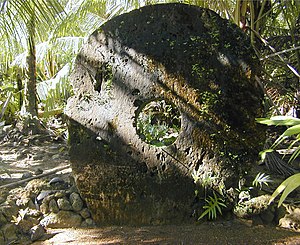
Although most official accounts on Timbian pre-colonial history were destroyed during the era of Daxian occupation, it is known that modern day Timbia consisted of a collection of tribes before the colonizers arrived. These tribes were known to have one of either two main government types, a council of elders (Fono a Toeaina) or a single chief (Sili) with absolute power. Tribal territory usually did not extend beyond the tribe's own settlement, though the size of the settlement could vary from a couple of huts around a plantation to something more reminiscent of a city.
Tribes were known to communicate and trade with each other, creating trade networks spanning various tribes where coastal products could reach inland, and vice versa. Tribal conflict was also commonplace in pre-historic Timbia, with tribes fighting not only for territorial dominance, but also over way smaller affairs such as trade fees and other minor disputes. Martial strength was seen as a metric of respect in colonial Timbia, and fights within a tribe were not uncommon if one wanted to challenge the chief and take his or her spot.
Ancient tales, preserved through oral history during the colonial era and later preserved and studied, speak of two ancient societies existing between the 700's and 1100's. One was centered at the modern day city of Falloopi, while the other was centered at modern day Rakin. These societies are referred to collectively by modern histories as the Parent civilizations (malo matua). In both cases, historians believe both societies started off as tribes that slowly but surely subjected neighboring tribes into their sphere of influence to create larger societies where subject tribes answered to the dominant tribe. Eventually these societies grew to explore across the mountain range splitting the country in half, and a brutal war erupted that led to the downfall of both these societies. Although little artifacts remain from this era, it is widely agreed that these societies were far more modern than the tribes that followed.
Colonial Era
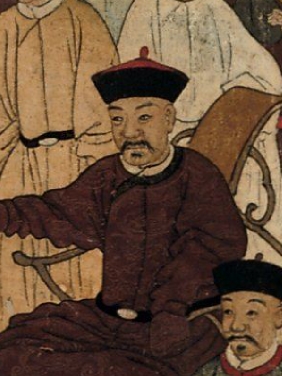
The colonization of Timbia almost started by accident, when a Daxian vessel captained by Xi Haifong suffered a major scurvy outbreak south of Zhijun and decided to deviate off its course to find land. The landmass they found turned out to be Peratraand it was deemed interesting enough for another expedition. Captain Haifong sailed back and he who established the first company trading post in a natural bay in what is now Rakin in 1611, where the natives could go and trade freely with the Daxians. Two years later a new Daxian community was founded at the cape of hope on the northwestern part of the island, named after the fact it brought hope to the ill sailors who discovered it. The Daxians called this city Xīwàng but is now known as the regional capital Faamoemoe.
Daxian exploration beyond the initial settlements at Xīwàng and Rakin was met with curiosity and then hostility from the local tribes, who did not trust the foreign settlers. In 1615 the company ordered Xi Haifong to send representatives to the king of Taualai; a kingdom in the southwestern coast of Peratra, to hammer out a commercial agreement that would enable the company to have a presence in Taualai's coast by establishing trading posts there. The company representatives managed to get this from the king in addition to agreeing on the inapplicability of local laws inside the trading posts. This novel concept of extraterritoriality did not sit well with some of Taualai's royal advisors. Under pressure from noble factions unhappy with the accords reached with the company, the king of Taualai reneged on the agreement only a few weeks into their implementation. One of the trading posts under construction was attacked and overrun, the workers being taken as slaves.
This betrayal enraged the Daxians, who ordered Xi Haifong to humilliate Taualai. He gathered a squadron of seven ships of the line and sailed them to within sight of Taualai's capital of Bosavi and bombarded the town indiscriminately including the royal palace for three consecutive days. On the fourth day the king emerged from the jungle to plead for talks with Haifong. On behalf of the company, it was demanded of the king to not only adhere to the previous terms but additional conditions were levied. He was to release the enslaved company workers and compensate them, he was to destroy the fortifications that still stood in Bosavi, he was to hand over his heir as a hostage and he was to hand over the nobles who spoke against the agreements. Once they were handed over to the Haifong, the nobles were keelhauled in front of the king until they perished.
Despite keeping faithfully to the new conditions, the company no longer trusted the king so in 1634 they forced him to abdicate the throne to his eldest son; who had been a guest of the company in Zhijun for almost ten years. The new teenage king was soon presented with a treaty stipulating that should he die without siring a male heir, his kingdom would pass into the ownership of the company. By this point the kingdom was so weakened and infiltrated by people on the company's payroll that it could not hope to resist. The king died at the age of 16, a mere four years later, possibly strangled in his sleep. As stipulated in his treaty, the company took possession of the kingdom initially as 'stewards' and allowing for the nobility to continue ruling in a limited fashion but soon moving towards an entirely exploitative colonial venture. Resistance started almost immediately, moving inland into mountainous areas beyond company reach. The capture of Taualai provided two new deep water ports (known modernly as the cities of Lili and I'na) further away and protected from the piracy originating from Sudmoll. A four decade long push into the countryside followed, and by 1671 the Qian had nominal control all the way to the Tavua mountains that bisect Peratra. It is estimated that up to half the native population died during this period. The Qian also gave permission at this time to several slaving cartels to go on slaving raids past the Tula'au o Tina mountains, on which they would kidnap thousands of members of the Kaeoto, Mo’ukakai and A’ulele tribes. The captives would be dragged back to western Peratra and shipped off to various parts of the empire, this caused much resentment towards the Qian in eastern Peratra.
Over the course of the next 100 years the island was transformed into a rather modern mining colony, Timbia's vast supply of metals such as nickel and iron being exploited by the company. The local population was forced to follow Daxian culture and adopt Daxian last names, local languages were relegated and were not taught at schools or allowed to be used in business or in dealing with the government. The Qian did encourage some degree of intermarriage between ethnic Daxians and Polynesians, to lower their resistance and muddle their loyalties. On 1887 the Qian appointed as governor the first person not born in the mainland, a Daxian with a Polynesian grandmother named Noa Zhu, who would be the longest tenured governor of the colony and did much to develop it and bring new technologies from the mainland. The next three decades were not per se bad for the Timbian population, who enjoyed all the technological and social developments governor Zhu brought to them while their land was still being exploited. Regardless of this progress, the native population was still treated as a second rate class to the Daxian colonizers, who enjoyed considerable wealth based on the labor of the Timbians.
Independence and Civil War
Things changed rapidly for the colony in 1919, when a young Timbian officer in the colonial army named Li Xhipong shot his Daxian commanding Colonel and revolted with his mostly native company. Other Timbian units within the colonial army followed suit, and soon the Qian and government loyal Timbian auxiliary forces were facing a well organized army of ~10,000 Timbian soldiers who had defected from the colonial army. (The Colonial army at the time was made up of segregated Daxian and Timbian forces, with Daxian senior officers leading the Timbian units at the field level.) This military force, called the Free Timbian Army, retreated into the hills and fought the Qian forces through asymmetric warfare, raiding military caches and arming willing civilians as they went. By the time the first regular Qian reinforcements arrived, the Free Timbian Army had increased to nearly 30,000.
A bloody war was fought over the next two years, with Qian colonial and regular forces trying to flush out the growing independence fighters. As the war carried on, more and more Timbians saw their opportunity to turn on their colonial overlords and public unrest became the norm, with more and more Daxian colonizers retreating away from their holdings in the interior to take refuge in the coastal cities under tight Qian control and under stronger defenses. The war was bloody for both parties, with many Timbian irregulars dying at the hands of more organized Qian army units.
The war was eventually decided in the Battle of Xīwàng, when massed Timbian irregular and regular forces overwhelmed Qian defenses during a civil uprising among the workers inside the capital city of Rakin. Qian naval vessels, two freighters and a destroyer unloading supplies in the port, were captured by the attacking forces and a lot of the Qian elite hiding in the city were captured. The fall of the Qian capital on Timbia cut the colonial army off from its most important supply depot, and after failing to retake the city on two different occasions the Qian command signed an armistice on the 2nd of August, 1921. This date was later to be known as the Day of Timbian Independence. Timbian independence was followed by a six-long month period that saw the defeated Qian forces leave the Peratra along with around four fifths of the settler population, a period known in Timbian history books as the Great Retreat.
All was not well for the Timbian side after chasing out the Daxians, for the celebrations of their independence were short lived. The young Lieutenant who had caused the independence movement, Li Xhipong, was hailed by many as a national hero and was to be the first leader of a free Timbia, if it were not for the rapid rise of the far left leaning Timbian People's Party and their assassination of Xhipong. Over the next seven months, Timbians who backed the Party and various groups who did not fought over the rule of the island, with the Party eventually coming out on top in April 1923 through the cunning military leadership of Hemi Hidao. Hidao would end up being the first chairman of the Timbian People's Party and the leader of the country, which became known as the Timbian People's Collective.
Totalitarian Regime
Hidao's rise to power was followed by six years of civil unrest called the pacification, this period was characterized by the party's consolidation of power throughout the country, the swift and public assassinations of anyone who doubted the Party and its ways, and the total isolation from any foreign influence by expelling all foreigners, aside from re-educated Daxian who had elected to stay after the war. Between the start of the Independence war and the end of the pacification in 1929 an estimated 35% of the Timbian population died. By 1928 the Party's control over Timbia was firm and it could shift its focus from establishing dominance to ruling the nation. Plans were drafted to industrialize the next decade and half was spent catching up to the other nations of the world. By 1943 Timbia was an industrialized nation in its own right, most of its citizens having jobs although pay was low across the board.

The standard of living was not bad however, with the low pay being balanced out by a low cost of living. Timbians enjoyed a relatively free society on the social level, being barred only by the major barriers that were a lack of contact with the rest of the world and a totalitarian regime that took care of anyone who disagreed with it. For Timbians that had no desire to leave the country or doubt the party, life was well enough. By 1953 it became clear to Party officials that the initial ideology of total isolation did not pay off, Timbia was sitting on mined metals that it had no use for while lacking materials it could not locally produce and falling behind on modern technological advancements. A Timbian party was sent to Daxia and by December of that year the Treaty of Zanshu was signed by representatives of both countries. The treaty marked the start of a strictly controlled Daxian-Timbian trade relationship, with Timbian metals and resources being traded for Daxian resources, medicine, technology and weaponry. Most of the imported items would later end up reverse engineered to lay a base for Timbian spin-off products, spring boarding Timbian technological knowledge on various fields by decades within the span of mere years.
By 1964 Timbia was entered what is commonly known as its golden era. Its industry and knowledge base had expanded to the degree where it was able to sustain itself if need be, although it still depended on Daxian trade for new international developments and other rare resources. Timbian universities were producing the first generation of Timbian professionals taught entirely by Timbian professors, and both civil liberties and relative wealth grew within the boundaries of the Party's isolationism. The Timbian military had grown well equipped with both Daxian weapons and their reverse engineered copies, with a relatively modern blue water Navy capable of protecting Timbia's borders and even projecting Timbian naval power across the globe, which is something it never did.
The era of the Atom had not been lost on Timbia, and the isolationist nation started its own Nuclear research program in the late 1950s. Progress was not quick however, with the groundwork for the first Timbian reactor la-1 (Sun-1) being laid in 1961 while the reactor was not finished proper until 1976. It is rumored that Lixin Ji had a hand in helping the Timbians achieve the goal of finishing this reactor, with various sources implying Ji provided the Timbians with knowledge and design information somewhere between 1972 and 1975. This reportedly ran on a mix of secretly imported and locally enriched Uranium. By 1993, the Timbians performed their first and only nuclear weapons test at an undisclosed location in the Ocean of Cathay. This test, called Le La Faʻaleagaina (Devastating Sun) was reportedly a success, yielding 21 Kilotons. Timbia's nuclear program is currently spread between two civilian reactors, called Ia-2 and Ia-3, powering the capital of Rakin and the city of Faamoemoe respectively, and up to six undisclosed military facilities facilitating the production of Timbian nuclear arms. Timbia is reported to have between 40 and 60 relatively low yield (max 100kt) nuclear weapons.
By 1983 the golden era ground to a halt when youth across Timbia took to the streets to demand political freedoms and the right to travel outside of Timbia. These protests, known as the youngsters' mistake, led to a massive government crackdown and twelve month long curfew, most of the involved youngsters being forced to attend long term re-education programs. The years after this incident were cold yet quiet, the happiness of the prior decades being replaced with a new-found fright for what happens to those who speak against the government while the relatively lax Party of the time was shaken to the core by the incident, tightening the squeeze on the population to avoid repeat incidents. It was around this time that the Timbian economy peaked and slowly started declining, although the discovery of offshore oil and its export to Daxia briefly re-ignited Timbia's economy in the late 1980s.
This short boom lasted until 1992, when the Party of Daxian Democrats rose to power in Daxia and suspended the trade agreement between both countries as part of a general stance taken against foreigners. The loss of its only trade partner robbed the Timbian economy of its only foreign connection, and for the next five years the standard of living for Timbian citizens plummeted. It was not until 1997 that Timbia and Daxia reached a new, albeit watered down trade agreement with Daxia, incorporated as an addendum to the treaty. The return of trade with Daxia stabiilzed the Timbian economy, although it never fully grew as it did decades before. This situation would persist until 2022, with the cost of living for Timbians growing quicker than the GDP per capita. These last two decades of the Party's regime were characterized by bursts of violent actions taken against those considered enemies of the state, unfinished construction programs and repeated to modernize the military's equipment in large enough numbers.
2022 Revolution and Democracy

The Party's iron grip over Timbia came to a quick and unexpected end on the 23rd of April, 2022 when a group of senior military officers led by Major General Filemu Lung orchestrated the decapitation of the Party's leadership. Lung, a career intelligence officer, had long butted heads with Party officials over the influence the Party exerted over the Timbian military and the fact that in her eyes the Party's refusal to interact on the international stage handicapped the nation's potential. Lung, along with other senior military officers such as Air Force Colonel Kun Hzan, and senior civil servants such as Second Deputy Minister of Foreign Affairs Iakopo Hsin, came to the conclusion that the Party would not listen to their pleas to evolve and that removing the party from power would be the only way for Timbia to avoid tearing itself apart and progress to what it could become.
The evening of the 23rd of April saw the High Executive Committee, the de facto leadership of the Timbian People's Party, convene at a Party-owned location outside of Rakin known as the Garden of Hidao to privately celebrate the 100th anniversary of the Party's victory in the Timbian Civil War. The day itself had been filled with public celebration and military parades throughout the country, with the Party's most senior leaders agreeing to spend the night privately celebrating the occasion the same way they always did: A lavish party at a location well away from the public eye.
Lung's group had known about these parties and a routine training sortie was planned for a pair of fighter-bombers from an airbase just north of Rakin. This base was commanded by the decorated Colonel Kun Hzang, who had ensured two flight crews loyal to the plot were flying the training sortie. Training ordinance had also been replaced with live-fire precision weapons at the direction of a junior ordinance officer loyal to the plot.
The jets took off just after midnight, heading south towards the capital to reach open waters and conduct their training sortie. The jets never made it to the capital however, for they strayed off course and were over the Garden of Hidao by 12:26 in the morning. Four 2,000lb precision bombs struck the celebrating politicians before anyone realized the jets intended harm, taking out the whole High Executive Committee in a single blow.
The days after the 23rd were chaotic. No official line of succession had been outlined by the Party, and multiple elements within the Timbian government declared themselves the rightful successors to the High Executive Committee. News of the Party's leaders dying led to massive public protests, with locals who had up until that point feared the Party using the chaos within Timbia's government to protest the state of the nation. Although multiple government entities tried ordering military and security forces to clash with the protesting crowd, they never mobilized.
By mid-May it was agreed that the situation was untenable and Vice-Chairwoman Fiva Yeng of the Lower Executive Committee went on national television to announce major reforms within Timbia's government. The Committee would form a temporary government with other military and civil leaders to explore ways to arrange the free elections the millions in the streets had demanded, and on the 24th of July, 2023 a new constitution was voted into effect, officially creating the Republic of Timbia. Elections were planned for next September.
September came and two major political parties had formed to take part in the elections, the left-leaning Timbian Labor Party (SLP) and right-leaning Timbian Liberal Front (SLF). Candidates for both respective parties were Fiva Yeng, who had headed the interim government, and Iakopo Hsin, who was considered a public hero for his role in orchestrating the revolution. The race was initially tight, with no clear winner in sight until ten days before the actual election date of September 25th. It was on this day that Yeng submitted a public statement saying she felt unable to lead the nation, and wished to exercise her support for Hsin. Although the SLP managed to replace Yeng by another candidate before the elections, the SLF won by a decisive victory at 68.3%. Both houses of the Timbian parliament would also be filled with an SLF majority.
Hsin's presidency has been a step in the right direction for Timbia so far, with many decrees being signed in the first months to continue breaking down oppressive entities of the previous regime, a process the interim government had started. Timbian borders opened a week few months before Hsin took office, with businesses from around the world being invited to explore Timbia as a market. Timbia now has an infantile tourism industry and multiple airports are being renovated to accommodate frequent international travel comfortably. With Timbia's new outlook on international trade, the relatively cheap Timbian metals and oil have become a product available to all who wish to import it. Early estimates indicate that Timbia's economy may grow larger than it ever has as a result of these reforms and the start of large scale international trade, with reports indicating that the per capita GDP could grow to $35,000 or even $40,000 by early 2025.
Geography
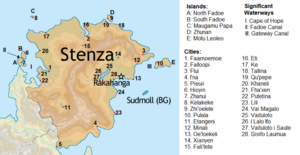
Timbia occupies a position on the northern edge of Australis, sitting at the top of its the island sub-continent Peratra ny lanitra lehibe atsimo (Ring of the Great Southern Heaven), commonly referred to as Peratra. The country is home to various climates, thanks to its dividing mountain range. The mountain range, called the Tula'au o Tina (Spine of Mother), has historically been seen as a dividing factor, not just topographically but also demographically.
Climate and Environment
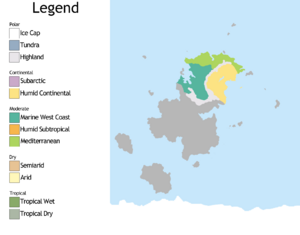
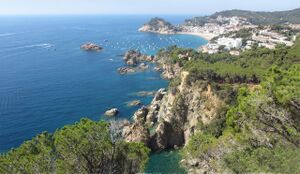
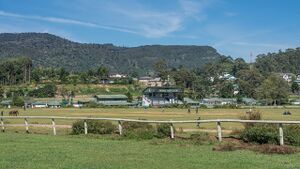
Timbia's mountain range leads to the country being split into multiple climates, with the mountains itself having a Highland climate where rainfall comes during a summer monsoon season, usually between October and February. Temperates vary from generally between 4 and 10 degrees Celsius in winter, to up to 20 degrees Celsius in summer.
Eastern Timbia enjoys a Humid Continental climate, with warm summers up to 26 degrees Celsius, and cold winters with freezing temperatures. Forests thrive in this part of the country, with a lot of lumber being grown for use by the rest of the country, and for export.
Timbia's Northern coast enjoys a Mediterranean climate with dry summers. Temperatures can hit 30 degrees Celsius during hot summers, and between 1 and 5 degrees Celsius on cold days in winter, depending on the area. This area is ripe for the growing of grape-like agricultural products, and the Timbian wine industry is almost exclusively housed in this area.
Timbia's West coast enjoys a Marine West Coast, or Oceanic climate, temperatures between 27 degrees Celsius in Summer and 7 degrees Celsius in winter are measured here. Most of Timbia's agricultural industry is focused within this area.
Demographics
Ethncity according to the official census (2020)
The 2030 national Timbian census enumerated a resident population of 88,937,503. This is an increase of 9% over the 2018 figure. As of 2032, a study by various universities estimates the population to have surpassed the 92 million mark.
The vast majority of the Timbian population lives in the fertile lowlands on the west and north-west sides of the country, with an approximate up to 75% of the population living either in these lowlands or on the coast. The other 25% of the population lives along the hills and mountains, mostly in rural communities. Although historically a very rural country, urbanism has been on the rise in Timbia since the 1990s. Since 2029, 40% of the population lives in cities with populations of 100,000 or above.
The median age of the Timbian population at the 2027 census was 33.2 years. Life expectancy in 2024-2027 was on average 69.3 years for males and 73.2 years for females. Timbian fertility has been historically high, with a fertility rate of over 3.5 being common in rural areas throughout the 20th century. The move towards urban centers, among other measures such as increased child healthcare lowered the Timbian fertility rate however, which now sits at 2.1 for urban centers, and 2.7 for rural areas. There have been little to no studies into the most common causes of death among Timbian population.
Ethnically the majority of the population or 74.5% are ethnic Timbians, a Polynesian group native to Peratra. Prior to colonization the Timbians were divided into a microcosm of tribal identities that have fallen into disuse among the younger generations and those born post independence. 23% of the population are ethnic Daxians, a product of nearly three hundred years of colonization by the Qian dynasty. These Daxians are mostly descendants of settlers who stayed neutral or fought against Qian colonial authorities during the independence war. There is also a small and sometimes transient population of mostly foreign tourists of various origins, namely Levantians, Coscivians and Loa.
Politics and government
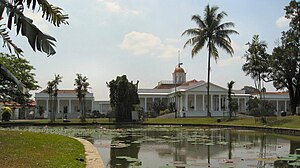
Timbia is a Federal presidential constitutional republic, with president Iakopo Hsin currently holding the office. The Timbian president is aided by the Democratic Congress, a legislative body that consists of both an upper and lower house. The houses are referred to as the First and Second Council of the Timbian Democratic Congress respectively, with new laws having to pass through the second house before going through the first. The president still has to sign off on anything passing the houses, and reserves the constitutional to veto bills and sign into effect emergency bills that are not approved by the congress. The Upper Council consists of 100 seats, while the lower has 200.
Timbia's government is highly centralized, with most of the previous totalitarian systems still in place. Regional governments have little autonomy beyond purely regional matters, and the federal government is strongly present throughout the country thanks to regional offices.
Law
Timbian law has historically been reported as rather fair, with the few outside studies on it indicating it as criminally harsh, yet fair on a civil level. Timbian law enforcement has been historically known to act outside the law though, with mass imprisonment and disappearances not being uncommon under the previous regime. These practices have recently been outlawed under the new government however, and Timbian state media has reported that those imprisoned under the old regime have been released and reimbursed. Interestingly enough, the detainment centers used under the old regime have yet to be shut down, with renovations turning them into more humane prisons. Timbia widely employers inmate labor to complete government-mandated construction projects.
Stanza boasts two major law enforcement agencies aided by multiple specialized smaller agencies. The Timbian National Police is the country's main federal law enforcement agency, being present throughout the whole country for basic law enforcement duties with its regional districts while also providing specialized investigative and tactical services.
Timbia's other main law enforcement agency used to be the Timbian Internal Forces, this military branch, under the supervision of both the Ministry of Defence and the Ministry of Internal Affairs, acted as a paramilitary force capable of both enforcing Timbian law and defending the country. The force was both highly mechanized and fully militarized, sporting military uniforms, weaponry and vehicles. These forces were previously known as the Civil Peacekeeping Force, used by the previous regime as a device of terror. As of 2030, the Timbian Internal Forces are no more and have been absorbed into the army as light mechanized divisions. These military units still retain law enforcement privileges when deployed for law enforcement purposes by federal or regional governments.
Foreign relations
Timbia has started setting up relations with various nations ever since it has opened its borders, with economic or strategic value often being cited as the reason for these relations. One notable example is Arcerion, a nation that over the last few years has become a close ally of Timbia. Timbian-Arcer military cooperation has become frequent, and trade between both nations is both frequent and profitable. Daxia is another foreign partner of Timbia, with the nations sharing a colonial history that goes back hundreds of years. The government of Iakopo Hsin has increased contacts and trade with Daxia, taking advantage of the Daxian minority in Timbia to rekindle cultural and business ties between the nations. Timbia has also been doing business with Burgundie on subjects such as trade and international maritime security. There is plenty of trade between Timbia and other nations, with Timbian companies free to do business as they please.
Timbia is a member state of the League of Nations and has a seat on the League of Nations General Assembly. Timbia has also been appointed a rotating seat for 2026 on the League of Nations Security Council. Timbia also uses the Polynesian Pact to interact with the nations that share its culture, opening the door to even further economic, cultural and defensive cooperation.
Sudmoll controversy
Following its independence in 1921, Timbia laid claim to the Burgoignesc island of Sudmoll. On a number of politically advantageous occasions, the Timbian Armed Forces have been dispatched to occupy the island often leading to an escalation of tension between Timbia and Burgundie. There have also been a number of flashpoints between Timbian and Sudmollese fishing and merchant fleets that have had to be broken up by the coast guards of both countries. To this day the matter remains unsettled with both nations claiming the island, but Timbia's last concerted effort to exert control over the island was in 1984.
Human rights
Timbia's citizens enjoy relatively fair human rights. Both same sex marriage and soft drugs have been allowed since the 1970s, with government-owned vendors selling safe soft drugs to all who are deemed medically fit and capable of buying them with a permit issued by their general practitioner to prevent addiction. Timbia has been known for its complete gender equality, a trait that dates back to its tribal heritage where both men and women were considered equally capable of filling leadership roles. Healthcare in Timbia is freely accessible to all who are insured, with insurance providers being subject to regulations to keep the prices in check.
Timbians have not traditionally enjoyed the right to elect their own government, with only one party appearing on the voting ballots for decades. This has changed recently, and the Timbian population is now able to vote once every four years. The shift in Timbia's government has also removed the fear to speak up against the government, with free speech being praised by the new president.
Sanitation is freely available in Timbia, and people are well fed. Government censuses show that 93% of Timbia's adults are literate. The same census shows that 42% of Timbia's adults speak more than one language, with a secondary language being mandatory in Timbian high schools. Higher Education is not free in Timbia, but those wishing to pursue higher education can do so through a low-interest loan. Student grants are also widely available in Timbia, with future employers willing to pay for competent candidates' studies. The Timbian government makes wide use of this system to find future civil servants and military officers.
Military

The Timbian Armed Forces act as the official constitutional military for the Republic of Timbia and were officially constituted into their present form in 1921. The force describes itself as mostly defensive, and is known for its rather timid ground forces compared to a strong naval force. The Timbian Armed Forces are led by Timbia's National Defense Council, a nine seat council with three representatives from each service branch. The military is fully integrated with all positions open to both men and women given they meet internal standards, and has been since 1967. The Timbian Armed Forces rely on a number of international suppliers for many of its weapons and vehicles, while also producing some of these on license; some of Timbia's military suppliers are Arcerion, Daxia and Burgundie.
The Timbian navy has become mostly self sufficient in the production of its own surface vessels and submarines, product of a concerted effort to create a naval force that can project power in the Ocean of Cathay and defend Timbia's critical sea lanes to other continents and its fishing waters from threats that may arise. Timbia is also a member of the League of Nations in good standing and as such has contributed to some of its peacekeeping missions, Timbia provided logistical naval support to League forces during the war in Varshan and Timbian peacekeepers operated under Daxian command in northeastern Varshan after the war.
Economy
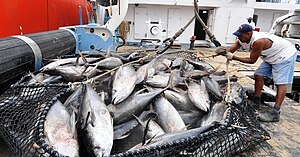
Timbia's economy has grown considerably over the last few years, with foreign trade being a major contributor to the rise of Timbia's economy. The opening of international borders has led to a healthy flow of good both into and out of Timbia. The GDP per Capita in Timbia has grown by 13% in the last two years and is predicted to climb further, with households gaining more income to spend as the cost of living in Timbia remains relatively low. Timbia's rising economy has given birth to a growth of the already present middle class, with those in it becoming more and more financially capable.
A considerable portion of Timbia's economy is built on the surrounding oceans, with Timbian companies being very active in the fields of maritime transportation, fishing and offshore oil exploitation. Timbia fulfills its oil and natural gas demand through these offshore fields, with excess production being sold in the international markets. Timbian fish have become an international staple for its quality and ripe flavor, the most commercially important species being tuna, mackerel, cod, seabass and crustaceans. The production of seagoing vessels through Timbia's multiple shipyards also contributes to the Timbian economy, most of Timbia's military vessels have been manufactured domestically and the nation is looking to begin taking orders from international buyers. Timbia has a domestic car industry that sells domestic models, although it also imports many foreign vehicles from overseas brands. The warm climate of Timbia also lends itself to the production of a variety of spices and fruits, a sector that has been developed since the Daxian colonization and that continues to employ tens of thousands of people who now benefit from the introduction of technology and more efficient growing methods.
Transport
Timbia enjoys a vast if not very efficient road network, with most minor settlements at least having one paved road loading to the major networks. Roads are not always well maintained however, and they get more treacherous the further one gets into the mountains. Rail connections are also available, with most major hubs being connected by long range trains in some way or another, a handful of mountain tunnels even exist to cross between the East and Western part of the country, with only trains being allowed through. Motorists have to either go through the mountains or board a car-carrying train, which will drive the cars through.
Timbia's road network was built on the backs of inmate-laborers throughout the sixties, seventies and eighties. Political prisoners of the old regime were generally used as cheap laborers, and through their effort Timbia was able to afford the paved road network the country has today. This has led to issues with maintaining the roads however, with the new government only slowly gaining the capacity to maintain all the roads properly. As a result, voluntary inmate labor programs still exist to help with roadside maintenance.
To compensate for the sometimes questionable quality of road travel, domestic air travel is widespread. Domestic flights amount for a large portion of Timbia's east-west travel each year, and even the remotest mountain community tends to have some sort of access to air travel, be it fixed or rotary wing. Timbia has a wealth of airlines that fight for profit between Timbia's more remote communities, with the country domestically producing the right light aircraft for the job. Timbia's islandic nature has led to seaplanes being a common mode of transportation, with both small and somewhat larger amphibian aircraft existing to fly between the mainland and the multiple islands that lie within Timbia's reach.
Timbia's coastal profile means it is a naturally seafaring nation, with a large part of its economy being built on foreign trade and fishing. Timbian ports are known to be bustling economical centers where one can easily get lost between the containers, sailors and other commotion. Travelling the Timbian seas is a popular way of making one's way around Timbian central mountain ranges, with companies offering cheap transit cruises for those who need to get across without the hurry those travelling by air tend to have. Timbia's inland waters also provide a wealth of opportunity, with both trade and travellers trade flowing up and down the rivers that connect many major Timbian settlements.
Energy
Energy in Timbia is currently produced on multiple fronts, with the first and oldest one being its fossil sources. The electrification of Timbia was built on the backs of older fossil fuel plants, with plenty being built around the country to sustain the energy grid. The late 1960s saw a new source of energy emerging in Timbia, with the country building multiple hydroelectric dams over the next few decades to shift the burden of providing electronic power away from the aging fossil plants, these dams, placed at beneficial locations along Timbia's mountainous rivers, make up for about 45% of Timbia's energy production. Timbia also operates Nuclear power, with the Ia-2 and Ia-3 powering the capital of Rakin and the city of Faamoemoe respectively. These reactors together are able to supply about 25% of Timbia's power needs, with the last 30% still being provided by fossil power to this day.
The Timbian Government has pledged to eventually eliminate the country's reliance on fossil power, planning to eliminate the fossil powered plants from Timbia's power grid. The government has stated that Nuclear power will be the route through which this will be achieved, with other green energy sources being considered too ineffective or expensive to maintain. Notably, Timbian sailors violently stood up against the suggestion to build offshore wind farms, with many claiming it would make maritime navigation and fishing difficult. The Timbian Government has projected the need for two further, higher capacity, reactor facilities to meet both the current demand and be future proof when Timbia's energy needs grow. A multi-year government project is currently underway to budget the money required to build these plants, with the government aiming to start construction before 2027.
Culture

Timbia's culture draws a lot from two distinct sources: Its Polynesian nature as an island state, and the influence Daxia has had on its culture during the colonial era. As an effect of this, Timbians frequently have Polynesian given names and Daxian surnames, or vice versa. Emphasis has been placed on Timbia's Polynesian heritage over the last few years however, with Timbia aiming to characterize itself as a center of Polynesian culture. With the Tula'au o Tina mountain range dividing the country, the land north and west of the mountain range has a higher degree of Daxian influence, while the land south and east of the mountain range has a higher degree of Polynesian influence. This has to do with the fact that the Daxians were never able to fully make their way across the mountains.
Timbia's aim to become a source of Polynesian culture is visible through the Polynesian Pact, a Timbian-funded international organization aimed at spreading and celebrating the Polynesian culture. Through this pact, Timbia is heavily involved in cultural exchange with other partner nations. The organization provides education on Timbia's pre-colonial history and culture throughout the country itself, with museums and festivals being commonly funded by the organization.
The Timbian workplace culture is quite traditional and normal as one may find around the world, although it is peculiar to note that the Timbian workday consists of two seven hour shifts, one from 8AM to 3PM, and one from 3PM to 10PM. The average Timbian works five days a week. Through Timbia's interesting workday division, most recreational activities are available either before or after work as well. It is not uncommon to see Timbians who work the later shift to take part in recreational activities such as visiting a movie before their shift, instead of after.
The Timbian culture, although historically distant to foreigners, is one that is very welcome to strangers at the core. It is not uncommon for Timbians to invite visitors over to stay for dinner or even the night, and it is considered quite rude not to offer a guest food, or to deny it. Timbians will generally bring food to whoever they are visiting, knowing they will be invited over to dinner and not wanting to be unable to contribute to the meal.
Fashion in Timbia is at a turning point. Throughout the decades since independence, Timbia has very much tried to follow the latest international trends to be considered modern, with fashion being an integral part of it. The resurgence in popularity of Timbia's Polynesian culture has caused a shift in Timbian fashion however, with traditionally pieces becoming ever so popular among the culturally proud in Timbia. This has led to an interesting mix of traditional and modern fashion usually referred to as Timbian-Modern, with the design culture's colorful pieces gaining attention beyond Timbia as well.
Religion

Organized religion has historically been a minor to non-existent entity within Timbian society, with its ancient tribal religions being outlawed during the colonial era. Independent Timbia started off inheriting its ban on religion, although the government allowed the creation of the Polynesian Revivalist Church in the 1970s. This religion, which tries to merge what is still known of ancient tribal religions with modern day ideals, was originally used by the state to relay its ideals to those who chose to attend it. By 2014 however, the church had gained independence from the state and gained popularity through interest in Polynesian Revivalism. By 2029, 12.2% of all Timbians are part of the church, which is closely associated with the Polynesian Pact. The Polynesian Revivalist Church has been described as a "more modern and down to earth adaption of Kapuhenasa" by some.
Polynesian Revivalism has not been the only religion based on ancient tribal religions that popped up in Timbia. Ever since its independence, the Tribal Church of Timbia has had a small yet devoted following. This church practices a form of religion called Neo-Tribalism by many, which aims to reflect the ancient tribal lifestyle rather extremely. It is reported only 0.7% of Timbians follow the Tribal Church of Timbia in 2030. Between 1967 and 2004, the Tribal Church of Timbia was marked a terrorist organization because of its extremist tribal ways and hostility towards non-followers.
In 2023, the College of Levantine Churches settled down in Timbia in wake of the revolution a year prior. Although Protestantism has no history in Timbia prior to this day, the church has booked moderate success in gaining the attention of Timbia's citizens. By 2029, 1.7% of Timbia's population identifies as a protestant who attends a CLC connected church. In addition to Timbia's native protestants, CLC connected churches are popular among Timbia's growing numbers of tourists and expats, offering the religious services they are used to in their home countries abroad.
